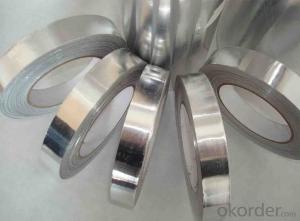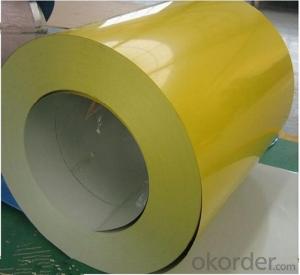Aluminum Flashing Coil
Aluminum Flashing Coil Related Searches
Led Light Bulbs For Ceiling Fixtures Led Lamps For Ceiling 42 In Ceiling Fan With Light Aluminum Coil Stock For Gutters Aluminum Foil For The Grill Hole Saw For Aluminum Plate Aluminum Tread Plate For Trailer Bow Plate For Aluminum Boat Aluminum Foil For Grow Room Aluminum Foil For Joint PainHot Searches
Stock Price For Aluminum Aluminum Coil Stock For Sale Aluminum Gutter Coil For Sale Used Aluminum Scaffolding For Sale 1/4 Aluminum Plate For Sale Aluminum Bar Stock For Sale Aluminum Round Stock For Sale Aluminum Diamond Plate For Sale Aluminum Scaffolding For Sale Craigslist 6061 Aluminum Plate For Sale Aluminum Dock Plate For Sale 7075 Aluminum Plate For Sale Aluminum Tread Plate For Sale Aluminum Checker Plate For Sale Aluminum Plate For Sale Near Me Plate Aluminum For Sale Aluminum Plate For Sale Aluminum Square Stock For Sale Aluminum Flat Stock For Sale Billet Aluminum Stock For SaleAluminum Flashing Coil Supplier & Manufacturer from China
Okorder.com is a professional Aluminum Flashing Coil supplier & manufacturer, offers integrated one-stop services including real-time quoting and online cargo tracking. We are funded by CNBM Group, a Fortune 500 enterprise and the largest Aluminum Flashing Coil firm in China.Hot Products
FAQ
- Aluminum coils possess the capability of being both welded and soldered. The fusion of aluminum coils can be achieved through welding or soldering, which are two widely employed techniques in this regard. Welding entails the melting of the aluminum material within the coils, followed by the application of heat and pressure to bind them together. This particular procedure necessitates the utilization of specialized equipment and skilled operators. Conversely, soldering is a process that utilizes solder, a filler material with a lower melting point, to connect the aluminum coils. Soldering is commonly employed in lighter applications and necessitates less heat compared to welding. Both welding and soldering are effective methods for joining aluminum coils. However, the selection between these two techniques depends on the project's specific requirements, the availability of equipment, and the proficiency of the operator.
- Aluminum coils play a crucial role in enhancing the corrosion resistance of marine applications. This is primarily due to the unique properties and characteristics of aluminum as a material. Firstly, aluminum has a natural oxide layer that forms on its surface when exposed to air, which is highly resistant to corrosion. This oxide layer acts as a protective barrier that prevents further oxidation and corrosion of the metal. This inherent property of aluminum makes it an ideal choice for marine applications, where constant exposure to saltwater and moisture can be highly corrosive. Furthermore, aluminum coils can be alloyed with other elements such as magnesium and manganese to further enhance their corrosion resistance. These alloying elements not only strengthen the aluminum but also improve its resistance to pitting and crevice corrosion. Pitting corrosion occurs when localized damage to the oxide layer exposes the underlying metal, while crevice corrosion occurs in areas where oxygen is restricted, such as gaps or joints. By alloying aluminum, the coils become more resistant to these types of corrosion, making them highly suitable for marine environments. Moreover, aluminum coils can be coated with protective finishes such as anodizing or painting, which provide an additional layer of protection against corrosion. Anodizing involves creating a thicker and more durable oxide layer on the aluminum surface, thereby increasing its resistance to corrosion. Painting, on the other hand, acts as a physical barrier that shields the coils from direct contact with corrosive elements present in the marine environment. In conclusion, aluminum coils contribute to the corrosion resistance of marine applications through their natural oxide layer, alloying with other elements, and the option of protective finishes. These characteristics make aluminum coils highly durable and capable of withstanding the harsh conditions encountered in marine environments, ensuring their longevity and reliability.
- The bending radius for aluminum coils can vary depending on the thickness and alloy of the aluminum. However, as a general guideline, the minimum bending radius for aluminum coils is typically around 1.5 times the thickness of the coil.
- Due to its numerous benefits, aluminum coils are widely utilized in the manufacturing of window frames. These coils are typically fabricated from top-notch aluminum alloy, offering qualities such as strength, durability, and resistance to corrosion. To initiate the window frame production process, the aluminum coils are initially unrolled and cut into the desired lengths. These coils come in various thicknesses, enabling manufacturers to produce window frames of different sizes and specifications. Subsequently, specialized machines are employed to shape the aluminum coils into the required profiles. These profiles can be extruded, bent, or rolled into diverse forms, such as rectangular or curved, depending on the window frame design. This flexibility in shaping permits the creation of customized window frames that fulfill specific architectural requirements. Once the profiles are shaped, they are joined together using various techniques such as welding or mechanical fasteners. The lightweight nature of aluminum facilitates easy handling during the assembly process, leading to reduced production time and costs. Furthermore, the aluminum coils can be treated with different surface finishes, such as anodizing or powder coating, to enhance their appearance and provide additional protection against weathering and wear. These finishes also offer a wide array of color options, allowing window frame manufacturers to match the frames with the overall building design or the homeowner's preferences. The utilization of aluminum coils in window frame production brings forth several advantages. Aluminum is an exceedingly sustainable material as it can be recycled multiple times without compromising its properties. Additionally, its lightweight characteristic simplifies the installation process and lessens the burden on the structure. Moreover, aluminum exhibits excellent thermal conductivity, which aids in enhancing energy efficiency by minimizing heat transfer. In conclusion, aluminum coils play a vital role in the production of window frames. Their strength, durability, flexibility, and aesthetic options make them the preferred choice for manufacturers. Whether for residential or commercial applications, aluminum coils provide high-quality window frames that adhere to industry standards and elevate the overall appearance and performance of buildings.
- Some of the different edge treatments available for aluminum coils include mill finish, edge trim, deburred edge, rounded edge, and hemmed edge.
- Yes, aluminum coils are suitable for decorative purposes. They are lightweight, durable, and can be easily shaped and colored to create various decorative elements such as trim, edging, and accents. Additionally, aluminum coils are resistant to corrosion, making them ideal for both indoor and outdoor decorative applications.
- Are parakeets allergic to aluminum because I wanted to use a metal pie pan for a bird bath.
- Aluminum is poisonous for birds (and not good for us either) Better to use a glass bowl or pie plate for the bird's bath.
- How does aluminum ingot be processed to aluminum coil (aluminum sheet)?
- This depends on what aluminum ingot is. Small ingot needs to be casted into big one by putting into the melting furnace, and then be rolled to aluminum coil through rolling mill.













































